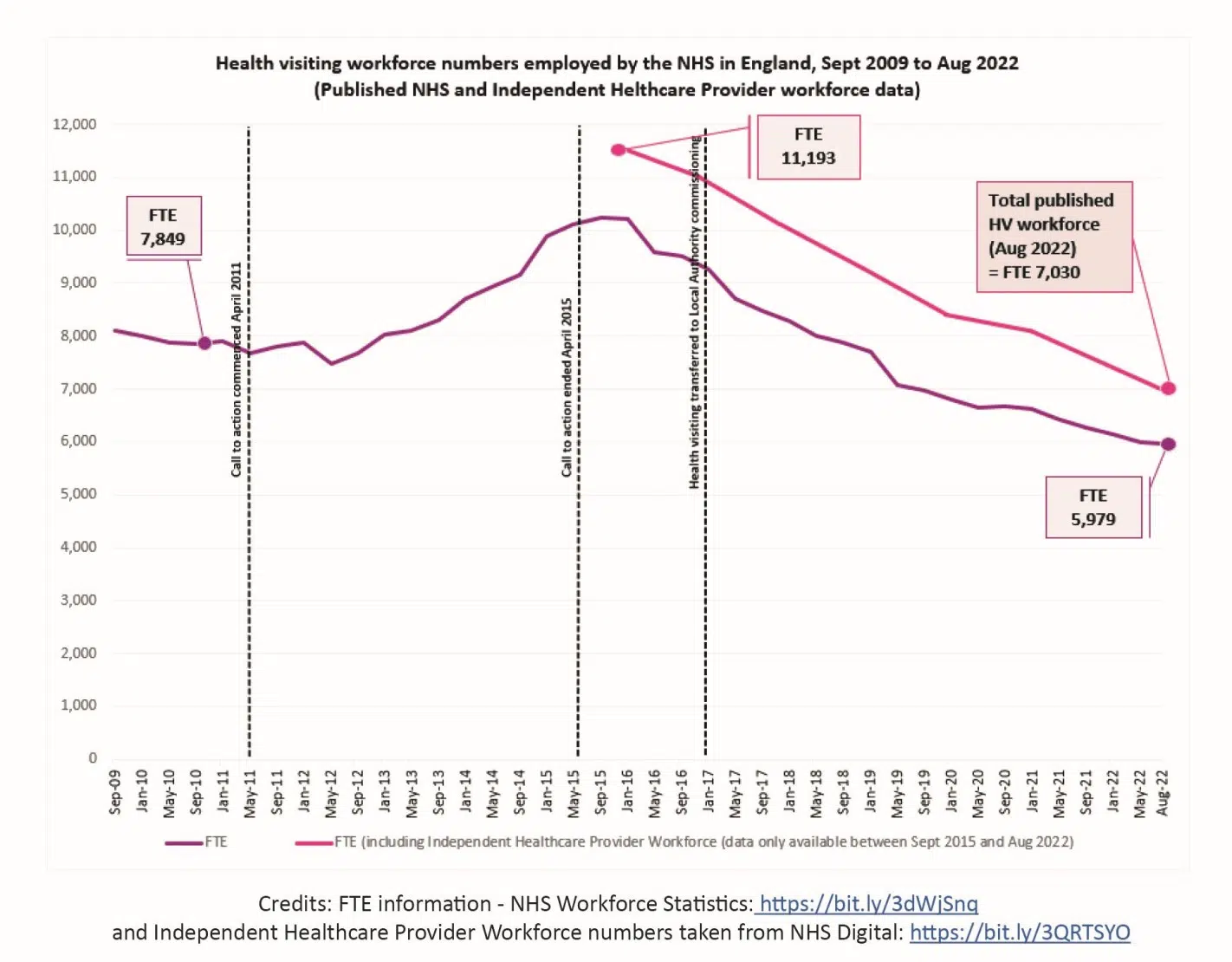New data on the health visiting workforce figures published yesterday show that health visiting (HV) numbers in England have reached an all-time low.
Raising concerns about the falling number of health visitors (HVs) in England has been challenging, as workforce data are not published in a single dataset. Since 2015, our members have been reporting a significant and ongoing reduction in HV workforce numbers and we have been calling for a workforce plan to address this – so far, this has fallen on deaf ears. Some policymakers have provided repeated reassurance that the situation is not as bad as the iHV has stated, as the NHS workforce data does not capture all the health visitors who work outside the NHS.
Yesterday’s publication of the most recent workforce numbers lays this bare. Health visitor numbers are falling in both NHS and non-NHS providers. There is now no doubt, if we want to retain an effective health visiting service in England, that we urgently need a HV workforce plan, and this cannot wait any longer. Despite health visitors’ best efforts, families are being left without the support that they need, and the consequences have been catastrophic for some families.
Georgina Mayes, iHV Policy and Quality Lead, says:
“Despite health visitors working tirelessly, supporting hundreds of thousands of babies, children, and families during the pandemic, we do not have enough health visitors to meet rising levels of need. As a result, too many families are missing out on essential health visitor reviews and the vital help that they need. Consequently, families are feeling alone and let down; health visitors are reporting work-related stress and burnout, all of which risks further HVs leaving the profession. Urgent action is required by national Government now to address the health visiting workforce shortages.”
How are health visiting workforce data reported?
Health visiting workforce numbers are published in two national datasets, one captures the number of practitioners working for NHS organisations and a separate dataset presents a smaller number of health visitors who work in non-NHS organisations. Whilst we have watched a month-on-month decline in the numbers of health visitors working in the NHS, the last Independent Healthcare workforce data was last published in February 2021 which has made it impossible to get a clear picture of current overall workforce numbers.
The newly published data now fully exposes a crisis in the HV workforce.
HV workforce numbers are currently published via two datasets:
- The NHS workforce data (using data from May 2022) = 5979 FTE HVs employed by NHS organisations.
- The Independent healthcare workforce statistics (using data from March 2022) = 1051 FTE HVs employed by non-NHS organisations.
The current total combined published HV workforce data (August 2022) = 7030 FTE.
The graph below visually shows the rapid decline in HV numbers. The HV workforce has decreased by over a third (37%) since 2015.
Contributing factors of the health visiting decline include:
- The Public Health Grant falling from £4.2 bn in 2015–16 to £3.3 bn in 2021–22.[1]
- A reduction in HV training places since 2015, which has coincided with budget cuts.
HV numbers are now well below the figures which triggered the Government’s Call to Action and investment in 4,200 more HVs in 2011 (7849FTE).
When adequately resourced, health visitors provide a vital infrastructure of support to all families – preventing problems and identifying needs early to reduce the burden of costly late intervention. Health visitors lie at the heart of the Government’s ‘Start for Life Vision’, as one of six essential services – we are therefore calling on the new administration to take the health visiting workforce situation seriously and provide the much-needed investment and the workforce plan that will be required to deliver this vision.
This is needed now more than ever to address the health visiting workforce crisis and reverse the national decline in the profession.
[1] The Health Foundation 2021 ‘Public health grant allocations represent 24% (£1bn) real terms cut compared to 2015/16’ (16 March)
https://www.health.org.uk/news-and-comment/news/public-health-grant-allocations-represent-a-24-percent-1bn-cut


